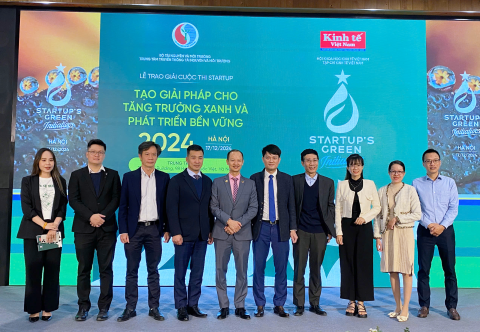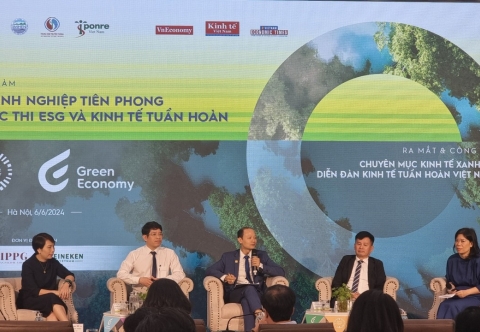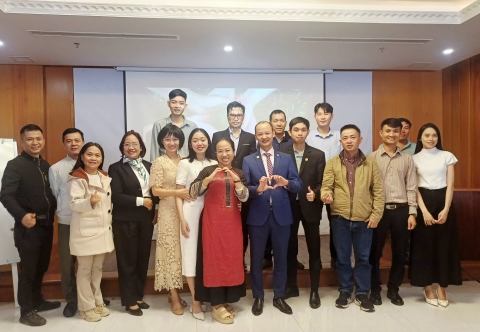Through the years, various reporting standards to capture data and information have emerged to provide greater transparency on how companies are navigating the climate crisis and stakeholder demands for corporate sustainability. These standards set forth a common language and a comparable set of ESG (environment, social, and governance) metrics, viewed ideally alongside financial disclosures, allowing informed decision-making among stakeholders.
In this article, we will briefly look at two standards that provide decision-useful information to cater specifically to the needs of investors and financial markets. These standards were created by the International Sustainability Standards Board (ISSB):
Creating global standards: IFRS S1 and IFRS S2
On June 26, 2023, the ISSB issued two global standards to operationalize these objectives: IFRS S1 and IFRS S2. These standards provide a framework for companies to disclose how sustainability and climate-related risks and opportunities affect or can affect their financial position, financial performance, and cash-flows through the disclosure of quantitative and qualitative information.
These standards are driven by the push to create a standardized way of integrating sustainability reporting and financial reporting that is growing in relevance among regulatory bodies. In October 2023, Brazil became the first country to announce the incorporation of IFRS S1 and S2 into their regulatory framework. Other countries and regulatory bodies following TCFD are also likely to follow suit, so it would be advantageous for companies to start preparing as soon as possible to get a firm grasp of these standards.
In 2024, ISSB will also assume responsibility of TCFD in monitoring companies’ progress on climate-related disclosures from the Financial Stability Board (FSB), the international financial monitoring body that created TCFD in 2015. The transfer of responsibility was announced on July 6, 2023, during FSB’s Plenary in Frankfurt, with the publication of the ISSB standards called “a culmination of the work of the TCFD.” With the release of TCFD’s 2023 status report in October this year, the task force has been disbanded and its roles have been virtually absorbed by the ISSB. Companies reporting on TCFD recommendations can continue to do so if they choose to or are required by their stakeholders and in preparation for the transition to using the new ISSB standards.
When adopted in the regulatory framework, ISSB requires both IFRS S1 and S2 to be used for annual reporting periods beginning on or after January 1, 2024.
IFRS S1 General Requirements for Disclosure of Sustainability-related Financial Information
IFRS S1 is a foundational document that requires companies to disclose material information about sustainability-related risks and opportunities across the value chain alongside financial statements. This includes information that can affect a company’s performance and prospects, such as future cash flows and access to capital. It aims to build a global baseline of sustainability information to be used by capital markets. A significant requirement of IFRS S1 is the provision of connected information linking sustainability disclosures to financial reports.
IFRS S1 follows the architecture of TCFD for the core content of the disclosure, with companies required to disclose the following:
- the governance processes, controls, and procedures the entity uses to monitor, manage, and oversee sustainability-related risks and opportunities;
- the entity’s strategy for managing sustainability-related risks and opportunities;
- the processes the entity uses to identify, assess, prioritize and monitor sustainability-related risks and opportunities; and
- the entity’s performance in relation to sustainability-related risks and opportunities, including progress towards any targets the entity has set or is required to meet by law or regulation.
To further provide nuance and context, IFRS S1 asks companies to consider using industry-based disclosure topics outlined in the SASB Standards for topics beyond climate, which are covered by IFRS S2.
IFRS S2 Climate-related Disclosures
Like IFRS S1, IFRS S2 requires companies to disclose material information, specifically on climate-related risks and opportunities, that may affect their performance and prospects. It builds on the requirements of IFRS S1, fully incorporating the TCFD recommendations in its core content as it requires disclosures on governance structures, strategies, risk management processes, and metrics and targets, alongside additional details that go beyond TCFD. These details can include information about the planned use for carbon credits to achieve net emission targets, financed emissions, and measurement approaches for scope 3 emissions.
The standard highlights disclosures on climate-related physical and transition risks and climate-related opportunities, allowing investors to better understand how these risks and opportunities impact a company, as well as evaluate its long-term resilience and adaptability. Key requirements for disclosures also include details on a company’s transition plans, its use of scenario analysis, quantitative data on scope 1-3 emissions, and how it intends to achieve climate-related targets, if any.
IFRS S2 is also aligned with CDP’s Climate Questionnaire and the SASB standards, requiring industry-specific, cross-industry, and company-specific disclosures under metrics and targets.
Benefits of implementing the IFRS Sustainability Framework
Although companies will incur costs related to the implementation and ongoing application of IFRS S1 and IFRS S2, many respondents to the exposure drafts, including most investors, indicated that the benefits of implementing IFRS S1 and IFRS S2 are likely to outweigh the costs.
Main benefits for investors
Investors are likely to benefit from the application of IFRS S1 and IFRS S2 by avoiding costs, such as the inefficiencies of manual data collection, management and analysis of sustainability-related financial disclosures. Many of these benefits for investors stem from the greater consistency, comparability and verifiability of disclosures when IFRS S1 and IFRS S2 are applied.
Main benefits for companies
Likely benefits for companies are related to improved data quality, including higher quality of information from companies that are in the value chain of a reporting company. Improved data quality is expected to have a positive effect on areas such as governance, strategy, access to capital, cost of capital, reputation, and employee and stakeholder engagement. Applying IFRS S1 and IFRS S2 might also help companies streamline their sustainability reporting processes for meeting the needs of investors. These benefits are largely confirmed by academic and market research and by the voluntary standard-setters whose materials form the foundation of the Standards.
Respondents to the exposure drafts suggested, for example, that using IFRS S1 and IFRS S2 would:
- Reduce fragmented disclosure requirements and complexity for preparers and investors
- Encourage companies with less mature disclosure practices to improve, enhancing the information available to capital markets
- Promote transparent capital markets that better reflect the cost of risk and support transition and adaptation efforts
- Improve companies’ monitoring of sustainability-related risks and opportunities, enabling more informed internal decision-making, providing a framework for strategic review of the business model and supporting better performance and longer-term value creation.
Given their wide applicability across industries and comparable requirements, integrating IFRS S1 and S2 in your reporting strategy can be a means to strengthen the quality and depth of your disclosures, as well as communicate integrity and genuine commitment in addressing sustainability and climate-related issues to your stakeholders.










